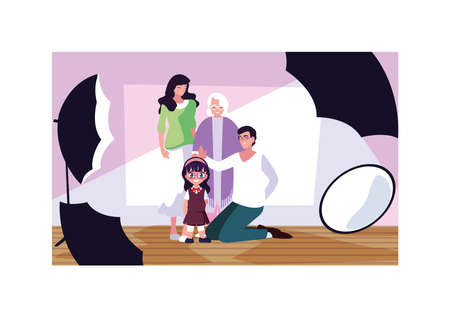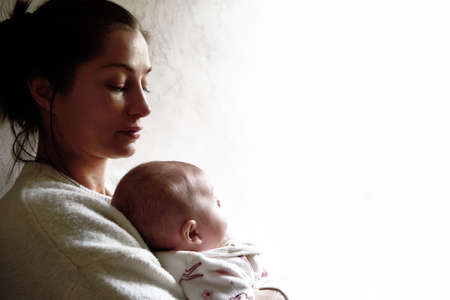Introduction to SIDS in the UK
Sudden Infant Death Syndrome (SIDS), sometimes referred to as “cot death” in the UK, is a tragic and unexpected event where an apparently healthy baby dies suddenly and without an obvious cause, usually during sleep. Although SIDS is thankfully rare, it remains one of the leading causes of post-neonatal infant mortality in the United Kingdom. According to recent NHS and Office for National Statistics data, around 200 families each year are affected by this devastating loss. Understanding SIDS is crucial for both parents and healthcare professionals, not only because of its profound impact on families but also due to its significance in public health discussions. Raising awareness about SIDS and dispelling common myths can help promote safer sleep practices and ultimately reduce the risk of these heartbreaking occurrences within UK communities.
2. Common Myths and Misconceptions
Sudden Infant Death Syndrome (SIDS) is a deeply concerning topic for many parents and caregivers across the UK. Unfortunately, a number of myths and misconceptions about SIDS continue to circulate, often leading to confusion or unnecessary fear. Understanding these myths is essential for promoting evidence-based prevention strategies and ensuring all families receive accurate information. This section explores some of the most prevalent misunderstandings surrounding SIDS within the British context.
Myth 1: SIDS Only Occurs in Unsafe Sleeping Environments
A common misconception is that SIDS only happens when babies are placed in dangerous or clearly unsafe sleep situations. While unsafe sleep practices—such as co-sleeping on sofas, excessive bedding, or sleeping face-down—do increase risk, it is important to recognise that SIDS can also occur in seemingly safe environments. The precise causes of SIDS remain unclear, and adhering to safe sleep guidelines reduces but does not eliminate risk entirely.
Myth 2: SIDS Only Affects Certain Communities
Another widespread belief is that SIDS predominantly affects specific communities, such as those from lower socioeconomic backgrounds or certain ethnic groups. In reality, while some risk factors may be more prevalent in particular communities due to social determinants of health, SIDS can tragically affect any family regardless of background. This myth can contribute to stigma and prevent open discussion about effective prevention measures.
Summary Table: Common Myths vs. Facts about SIDS in the UK
| Myth | Fact |
|---|---|
| SIDS only happens in unsafe sleeping environments | SIDS risk is reduced by safe sleep but not eliminated; cases have occurred even with all precautions taken |
| SIDS only affects certain communities or families | SIDS can affect any baby, regardless of family background, ethnicity, or socioeconomic status |
| Using monitors or gadgets completely prevents SIDS | No device has been proven to prevent SIDS; following safe sleep guidance remains crucial |
| If there’s no family history, my baby isn’t at risk | Most cases occur without any prior family history of SIDS; all infants are potentially vulnerable |
| Breastfeeding has no impact on SIDS risk | Evidence suggests breastfeeding can reduce the risk of SIDS compared to formula feeding alone |
Key Takeaway for UK Parents and Carers
Misinformation around SIDS can hinder effective prevention efforts and cause unnecessary anxiety. By separating fact from fiction, families in the UK can focus on practical steps that truly help reduce risk—such as placing babies on their backs to sleep, using a firm mattress without loose bedding, and avoiding smoking during pregnancy and after birth. Understanding that SIDS is complex and not confined to certain settings or groups empowers everyone to take informed action and support safer infant sleep across all communities.

3. The Role of Sleep Environment and Safe Sleep Guidance
Understanding the impact of sleep environment is crucial when discussing SIDS prevention in the UK. Both the NHS and the Lullaby Trust emphasise that creating a safe sleep space for babies is one of the most effective ways to reduce SIDS risk. However, several persistent myths continue to circulate among parents and carers, often leading to confusion about what truly constitutes safe sleep.
Clarifying Official Recommendations
The NHS and the Lullaby Trust both advocate for placing babies on their backs to sleep, on a firm, flat mattress, in a separate cot or Moses basket in the same room as their parents for at least the first six months. This recommendation is grounded in strong evidence showing that sleeping on the back significantly lowers SIDS risk compared to side or tummy sleeping. Despite this, some families still believe that babies might choke if they vomit while lying on their backs, but research demonstrates that healthy infants have protective reflexes that make back-sleeping safe.
Addressing Co-Sleeping Myths
Co-sleeping is another topic surrounded by misunderstandings. While some parents feel it strengthens bonding or makes night feeding easier, co-sleeping can increase SIDS risk under certain circumstances—particularly if parents smoke, have consumed alcohol, or are extremely tired. The Lullaby Trust provides nuanced guidance: if you choose to co-sleep, ensure there are no pillows, duvets, or loose bedding around the baby and never fall asleep with your baby on a sofa or armchair. These environments present significant risks and should always be avoided.
Debunking Myths about Sleep Position and Bedding
Another misconception is that special mattresses, pillows, or sleep positioners offer extra protection against SIDS. In reality, soft bedding and sleep aids can increase suffocation risk. The safest option remains a clear cot with just a well-fitting sheet. Parents sometimes worry their baby will become cold without extra covers or bumpers; however, keeping the room at a comfortable temperature (16-20°C) and using appropriate layers of clothing is far safer than adding extra bedding.
By following well-established guidance from trusted UK organisations like the NHS and the Lullaby Trust—and recognising where common myths diverge from scientific evidence—parents can create a safe sleep environment that truly protects their baby’s wellbeing.
4. Vaccinations, Feeding Choices, and SIDS Risk
Within the UK, concerns about routine childhood immunisations and infant feeding practices are common sources of anxiety for parents worried about Sudden Infant Death Syndrome (SIDS). Lets clarify what current evidence reveals about these factors and address prevailing myths.
Immunisations: Dispelling the Myths
A persistent misconception is that vaccinations increase the risk of SIDS. However, robust research from the NHS and Public Health England confirms that immunisations do not cause SIDS. In fact, evidence suggests that babies who receive their vaccinations on time are at a lower risk of SIDS compared to those who are unvaccinated or whose vaccinations are delayed. Vaccines such as DTaP/IPV/Hib/HepB are rigorously tested for safety and play a crucial role in protecting infants from serious illnesses that could otherwise contribute to poor health outcomes.
| Myth | Fact |
|---|---|
| Vaccines increase the risk of SIDS | Immunisation reduces SIDS risk and is recommended by UK health authorities |
| Delaying vaccines is safer for babies | Timely vaccination offers optimal protection during the highest risk period for SIDS |
Infant Feeding: Breastfeeding vs Formula Feeding and SIDS Risk
Another area rife with misinformation involves infant feeding choices. Some believe that formula feeding significantly increases the risk of SIDS, while others feel pressured or guilty if they are unable to breastfeed. The evidence indicates that breastfeeding, especially when exclusive for the first 6 months, does offer additional protection against SIDS. This may be due to antibodies present in breast milk and a reduced likelihood of infections among breastfed infants. Nonetheless, it is essential to acknowledge that safe sleep practices remain paramount regardless of feeding method. Formula-fed infants can also thrive if all other safety guidelines are observed.
| Feeding Choice | SIDS Risk Impact (Evidence-based) | NHS Guidance |
|---|---|---|
| Exclusive breastfeeding (first 6 months) | Lowers SIDS risk further; protective effect shown in studies | Encouraged where possible but not mandatory for safe sleep |
| Combination/Formula feeding | No direct causal link to increased SIDS if safe sleep advice is followed | No parent should feel judged—safe sleep is key |
The Bottom Line for UK Parents and Carers
Current evidence supports both timely immunisation and breastfeeding as beneficial in lowering SIDS risk. However, no single factor alone will eliminate risk entirely. Instead, following comprehensive safe sleep advice—including placing babies on their back to sleep, keeping their sleep environment smoke-free, and avoiding overheating—is most effective. Parents should feel reassured that choosing formula or facing delays in breastfeeding does not mean their baby is unsafe if other proven guidance is followed. Engaging with your GP, health visitor, or NHS resources ensures decisions are based on scientific consensus rather than myths.
5. Parental Smoking and SIDS: Addressing the Real Risks
One of the most significant and well-established risk factors for Sudden Infant Death Syndrome (SIDS) in the UK is exposure to tobacco smoke, whether during pregnancy or after birth. Despite extensive public health campaigns, some myths still persist that minimise or dismiss these dangers. It is crucial for parents and carers to understand that both maternal smoking during pregnancy and secondhand smoke exposure in the home are directly linked to an increased risk of SIDS.
Research consistently shows that babies exposed to cigarette smoke, either before or after birth, are far more likely to suffer from SIDS compared to those not exposed. This risk remains even if the parent only smokes outside or believes that cutting down is enough. The toxins in cigarette smoke can affect a babys developing brain and respiratory system, making it harder for them to wake up or respond to breathing difficulties during sleep.
Unfortunately, some misconceptions still circulate within communities—such as the belief that occasional smoking or vaping poses little threat, or that only smoking indoors increases risks. In reality, there is no safe level of exposure; even low levels of smoke can be harmful to infants. Additionally, e-cigarettes are not completely risk-free, especially if used around newborns.
Health authorities across the UK—including NHS and NICE—strongly recommend creating a completely smoke-free environment before and after your baby is born. This advice extends to all household members and regular visitors. If you need support to quit smoking, speak with your GP or contact local stop-smoking services for evidence-based help.
By addressing these myths head-on and reinforcing the real risks associated with parental smoking, we can better protect infants from preventable harm and further reduce SIDS rates across the UK.
6. What UK Parents Can Do: Evidence-Based Prevention
Reducing the risk of Sudden Infant Death Syndrome (SIDS) is a top priority for parents and carers across the UK. Thankfully, evidence-based guidance is available to help families create a safer sleep environment for their babies. Below, we break down practical steps that reflect current research and recommendations from authoritative organisations such as The Lullaby Trust and NHS.
Safe Sleep Positioning
The most effective way to lower SIDS risk is to always place your baby on their back to sleep, both at night and during naps. This advice applies to every sleep, regardless of location or time of day. Side and tummy sleeping positions significantly increase SIDS risk.
The Right Sleep Environment
Use a Firm, Flat Mattress
Babies should sleep on a firm, flat mattress with a well-fitted sheet in a cot or Moses basket that meets British safety standards. Avoid pillows, duvets, bumpers, soft toys, and loose bedding in the sleep area to prevent accidental suffocation.
Room Sharing Without Bed Sharing
It’s recommended that babies sleep in the same room as their parents or carers for the first six months but in their own separate sleep space. Bed sharing increases the risk of SIDS, especially if parents smoke, have consumed alcohol, or are overly tired.
Avoid Overheating
Keep your baby’s room at a comfortable temperature—ideally between 16-20°C. Dress your baby appropriately for the season and avoid heavy bedding or hats indoors. Feel your baby’s chest or back to check their temperature; hands and feet can naturally feel cool.
No Smoking Around Babies
Exposure to tobacco smoke significantly raises SIDS risk. Do not allow smoking in your home or car, and ensure anyone who handles your baby avoids smoking as well.
Breastfeeding and Immunisations
Breastfeeding, even for a short time, has been shown to reduce SIDS risk. Keeping up-to-date with routine immunisations also provides additional protection against infections linked to SIDS.
Reliable Resources for UK Families
If you have questions or concerns about safe sleep practices, consult your health visitor or GP. The Lullaby Trust (lullabytrust.org.uk) offers detailed advice tailored for UK families. By following these evidence-based recommendations, parents and carers can take meaningful action to protect their babies and promote peace of mind.
7. Conclusion: Empowering Families with Facts
Understanding the realities of Sudden Infant Death Syndrome (SIDS) is vital for every family in the UK. Throughout this article, we have addressed common myths and provided evidence-based information to help parents and carers distinguish fact from fiction. It is clear that while SIDS remains a concern, many misconceptions persist—such as beliefs around sleep position, room-sharing, and the influence of socio-economic factors. By relying on up-to-date guidelines from organisations such as The Lullaby Trust and the NHS, families can make safer choices for their babies.
Key take-home messages include always placing your baby on their back to sleep, keeping the cot clear of loose bedding and toys, ensuring a smoke-free environment, and sharing a room (not a bed) with your infant for at least the first six months. Its also important to remember that SIDS can affect any family, regardless of background, and that following safe sleep advice significantly reduces risk.
Empowering yourself with accurate knowledge is one of the best ways to protect your child. If you ever have concerns or questions about infant sleep safety, consult your health visitor or GP for tailored advice. By debunking myths and spreading facts within your community, you play an active role in supporting safer sleep practices across the UK.


